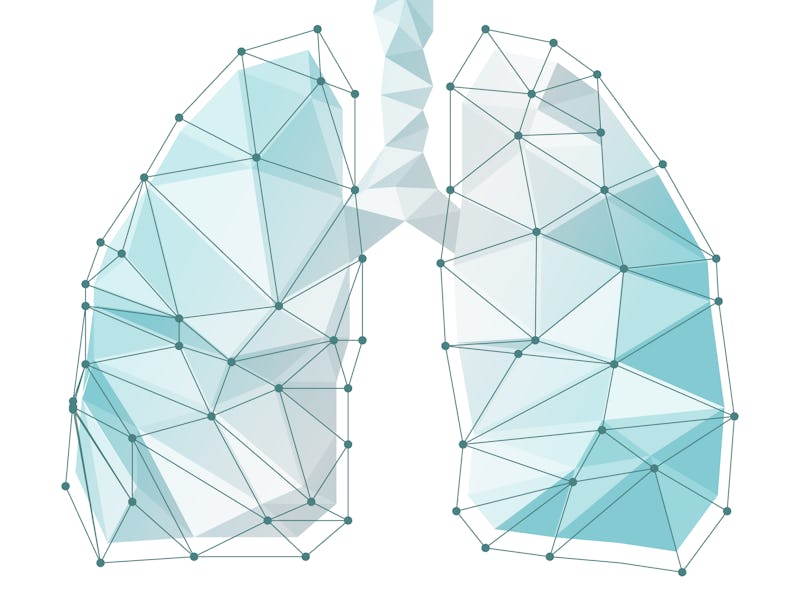A 2006 study on hacking ventilators is suddenly vital again
This system could keep four patients breathing on just one ventilator.

Hospitals around the world are struggling to meet the rising demands of coronavirus, especially when trying to provide patients with life-saving ventilation systems, but a 2006 medical pilot study might just have the solution.
The study, published 14 years ago in the journal Academic Emergency Medicine, describes how a single, hospital standard ventilator system could be converted to successfully ventilate four patients instead of only one by creating a splitter out of ready-to-use hospital supplies.
While prefabricated ventilator splitter systems do exist and new ventilators are being manufactured to meet demand, the study's co-author, Dr. Charlene Babcock, says in a new video describing the work that this approach can be put into action now and without additional equipment or staff.
In the study, Dr. Babcock and her coauthor write that by connecting ventilator tubing with 'T' shaped connectors they created a system where air flowing into the ventilator was split evenly between four patients and air flowing back out was routed through a single tube. Under simulated conditions the researchers were able to sustain this system for 12-hours -- hopefully plenty of time for additional ventilators to be found in an emergency, the authors write.
Dr. Babcock says in the video that while their pilot study wasn't tested in human patients (it instead used simulated lungs,) the approach was tested in practice during the 2017 Las Vegas shooting. Dr. Babcock says that a colleague who had read the study implemented the approach during that disaster and was able to demonstrate how it could successfully work in patients. Because of this, Dr. Babcock says that it could be similarly effective during ventilator shortages seen in the COVID-19 pandemic.
"I always hope that you would never need to use it in this way," said Dr. Babcock. "But you can never predict what's going to happen in a disaster. If it was me and I had four patients and they all needed intubation, and I only one ventilator, I would have a shared discussion meeting with all four families and say 'I could pick one to live, or we can try to have all four live.'"
Yet despite its successes, there do remain some unexplored limitations of this approach. Dr. Babcock and her co-author write in the study that the success of their model does not account for critical real-life variability. For example, while all simulated lungs in the study had the same capacity, that would not necessarily be the case for real patients. Because of this, patients of mixed ages and health conditions (e.g. asthma) may not be compatible to share a ventilator.
Similarly, Dr. Babcock said that their study could not determine whether or not such an approach would lead to the spread of infection or bacteria between patients sharing the ventilator system. However, in the case of coronavirus, Dr. Babcock says the risk would be fairly limited because patients using the system would presumably have the same infection.
Dr. Babcock says she wouldn't recommend using the ventilator system this way under normal circumstances, but stresses that we are no longer under normal circumstances.
"This is clearly off label [use of the ventilator] that we would only be using in a dire circumstance," said Dr. Babcock. "Which we may see with COVID-19."
Abstract: Objectives: To determine if a ventilator available in an emergency department could quickly be modified to provide ventilation for four adults simultaneously.
Methods: Using lung simulators, readily available plastic tubing, and ventilators (840 Series Ventilator; Puritan-Bennett), human lung simulators were added in parallel until the ventilator was ventilating the equivalent of four adults. Data collected included peak pressure, positive end-expiratory pressure, total tidal volume, and total minute ventilation. Any obvious asymmetry in the delivery of gas to the lung simulators was also documented. The ventilator was run for almost 12 consecutive hours (5.5 hours of pressure control and more than six hours of volume control).
Results: Using readily available plastic tubing set up to minimize dead space volume, the four lung simulators were easily ventilated for 12 hours using one ventilator. In pressure control (set at 25 mm H2O), the mean tidal volume was 1,884 mL (approximately 471 mL/lung simulator) with an average minute ventilation of 30.2 L/min (or 7.5 L/min/lung simulator). In volume control (set at 2 L), the mean peak pressure was 28 cm H2O and the minute ventilation was 32.5 L/min total (8.1 L/min/lung simulator).
Conclusions: A single ventilator may be quickly modified to ventilate four simulated adults for a limited time. The volumes delivered in this simulation should be able to sustain four 70-kg individuals. While further study is necessary, this pilot study suggests significant potential for the expanded use of a single ventilator during cases of disaster surge involving multiple casualties with respiratory failure